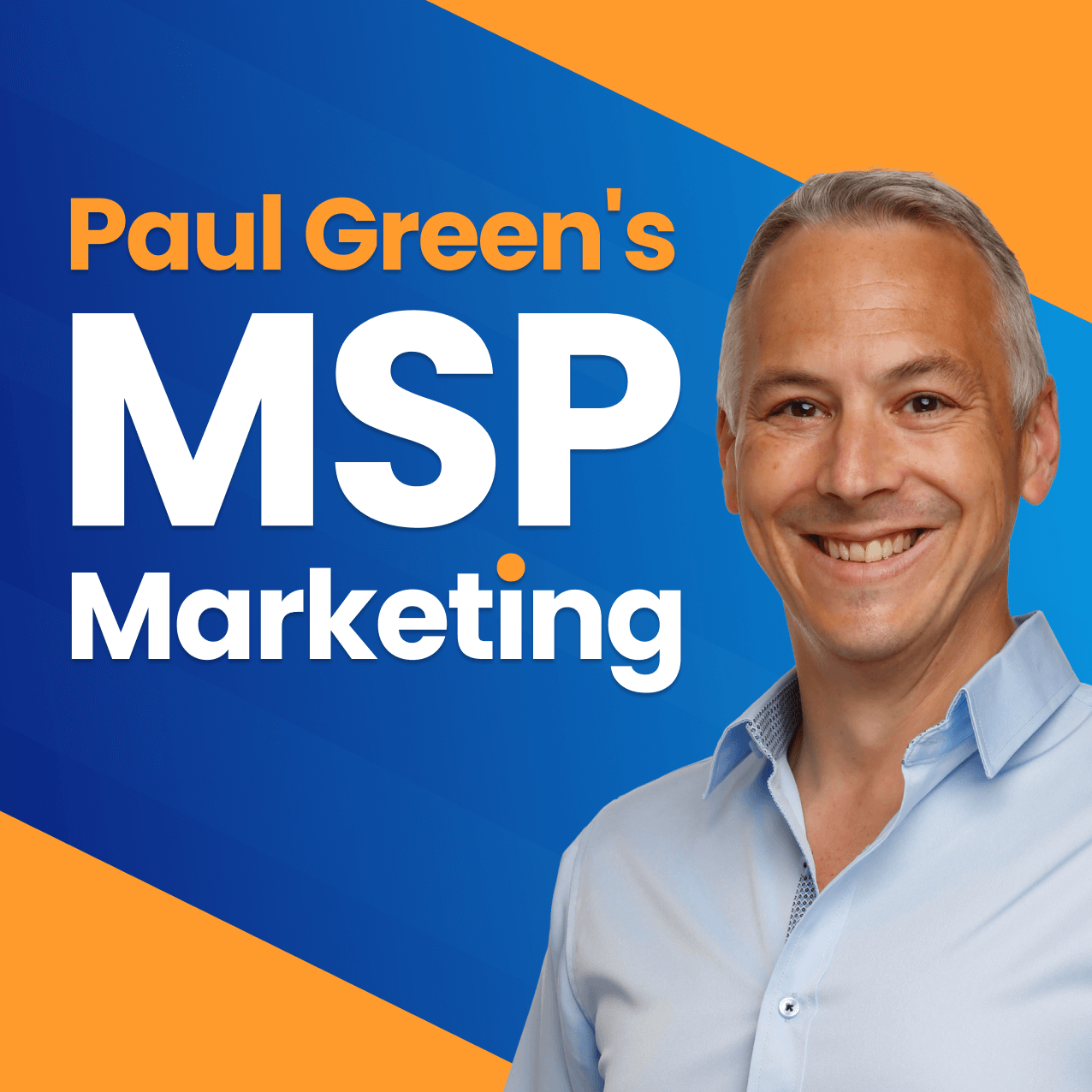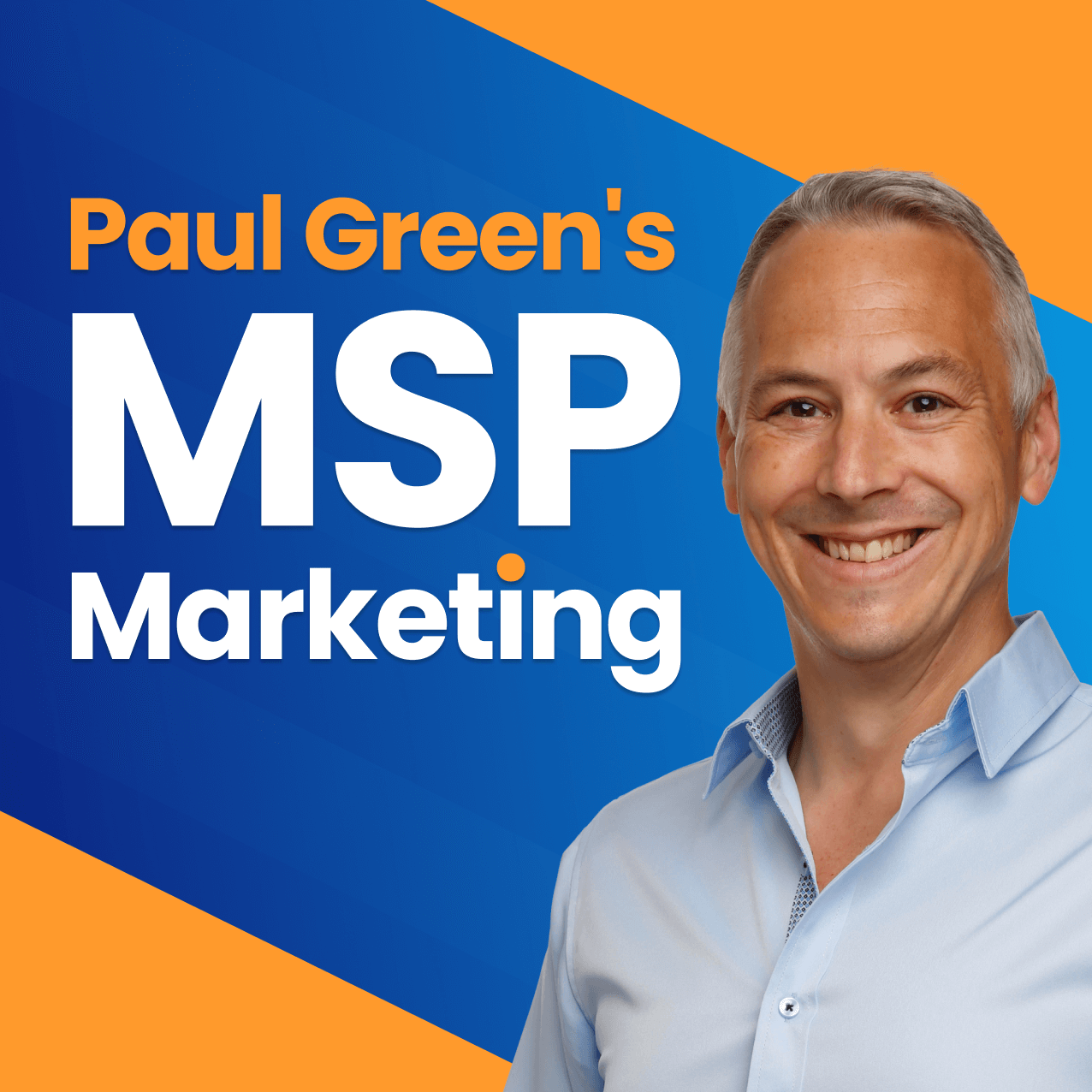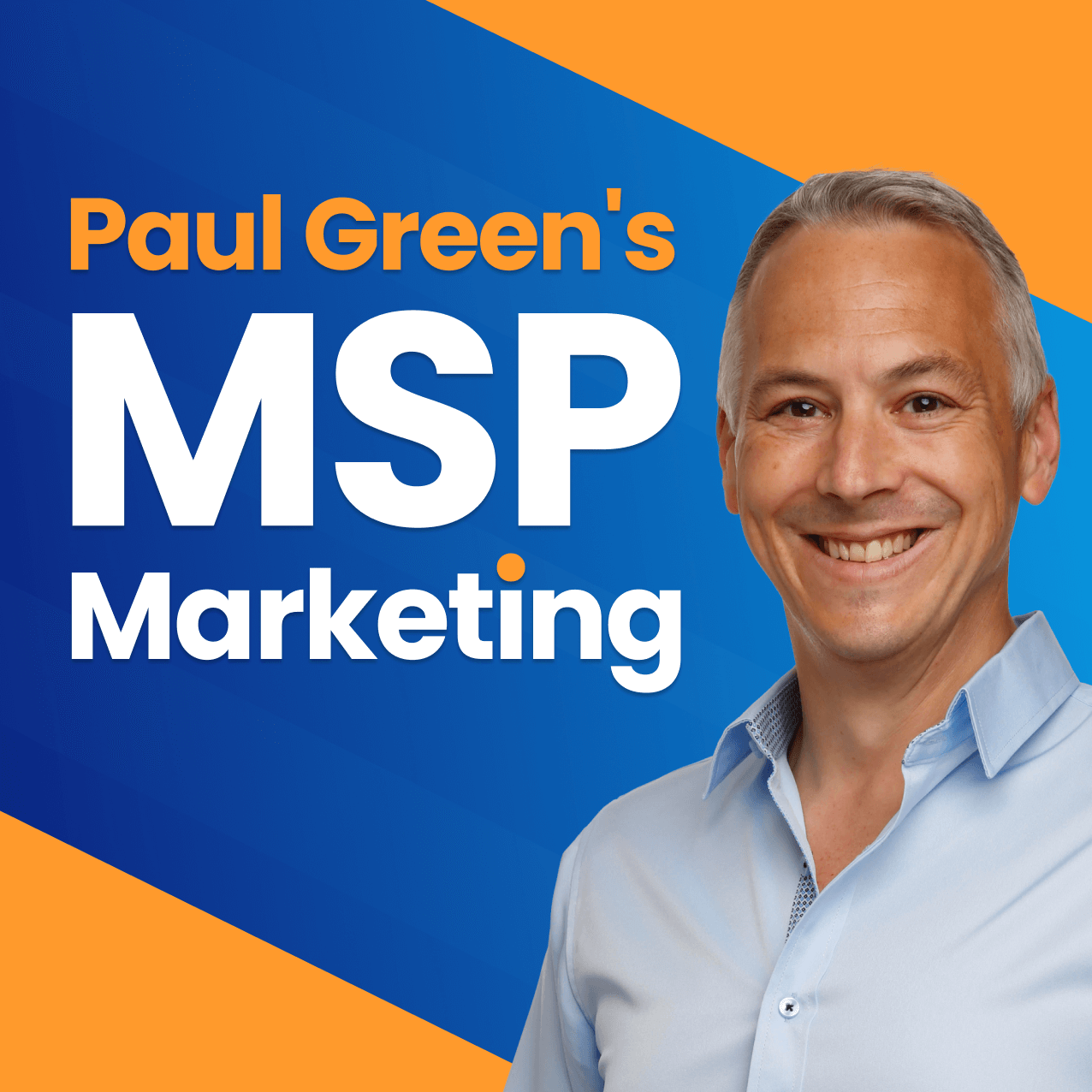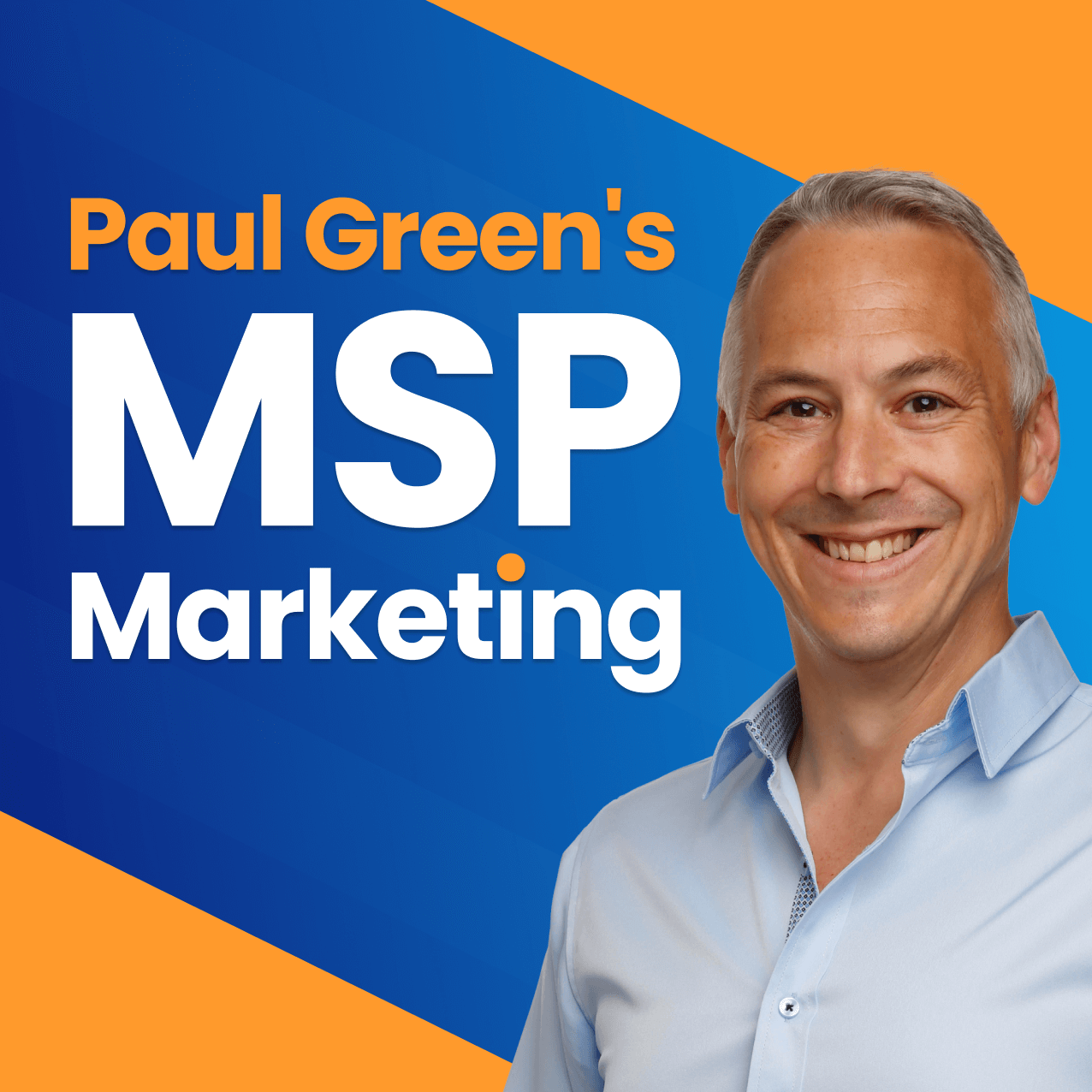Is on-site support a competitive advantage?
Description
The podcast powered by the MSP Marketing Edge
Welcome to Episode 305 of the MSP Marketing Podcast with me, Paul Green. This week…
- Is on-site support a competitive advantage?: Does your MSP still provide on-site support or are you thinking that maybe you should? Your decision could affect how successful your MSP is.
- How to find your MSP’s next 5 clients: Let me introduce you to the concept of the Dream 100 and how it could completely change your idea of marketing forever.
- Is this the only way MSPs should increase profits?: When profits are down should you reduce costs or focus your time on increasing sales? My special guest is an expert at operations and she’s got a unique spin on this exact problem that you are going to want to hear.
- Paul’s Personal Peer Group: Do you have a live chat or instant messaging option on your MSP’s website? There’s so many options it’s hard to know the right one to choose. But I have the answer for you.
Is on-site support a competitive advantage?
Some MSPs do do it, some MSPs make a point of saying, no way. We’re talking about providing on-site support. Obviously back in the day it went without saying, you just did it. But in our modern, remote first world, the need for in-person on-site support has completely changed. So are you still providing it or are you thinking that maybe you should or that you never ever will again, Your decision could affect how successful your MSP is. So let’s explore your options right now.
Let’s be honest, a few years ago having engineers who could turn up at a client’s office and fix something kind of felt like a major selling point, but here we are in 2025 and most businesses now are hybrid or remote, that happened very quickly.
Almost everything can be fixed remotely, so is on-site support still something worth shouting about in your marketing or is it yesterday’s news?
Let’s look at both sides of this.
The case for on-site support being a competitive advantage, first of all. It starts with the fact that some clients love knowing that someone will actually physically come out if needed. You think about clients with manufacturing equipment, specialist hardware, or those who just feel reassured by a human coming into the office. For them, we’ll be there in person if you need us, that’s a big comfort factor. And as we know, comfort sells. And not every MSP is offering this anymore, of course, so if most of your competitors have gone fully remote you’ll be standing out as we’re local, we’re personal, we’ll come on-site. That could be a differentiator in your marketing. It’s a trust builder. It says, we are not just faceless techs in the cloud, we are real people here for you.

Now let’s look on the other side, the case against on-site support being a competitive advantage. Because on the flip side, as we know, most day-to-day issues don’t need it. Clients are used to remote support now, in fact they expect you to fix things fast online, over the internet. And for many, the idea of waiting for someone to drive over and come into an office kind of feels old fashioned, it’s not special anymore. And then of course there’s the cost. Offering on-site support means travel time, scheduling headaches, and of course engineers are less productive if they’re on-site. They’re not doing three things at once like they are if they’re in the office or working from home. So if your competitors are leaner because they don’t offer it, that could make your prices look higher for something the client doesn’t even value.
It’s tricky this isn’t it, so what’s the answer? Honestly, I don’t think there is a specific answer, it all depends on your target market. If you are serving local businesses who appreciate a personal touch, then absolutely keep on-site support and promote it as part of your premium service or offer it as a bolt-on as like an upgrade. But if your clients are mostly remote friendly and they care more about speed than a handshake, on-site support might not be the advantage that it once was.
The key here I think, is to know your audience and don’t just assume that on-site support is a magic selling point. Test the message. Ask your best clients what matters most to them? And whatever you decide, make sure your marketing highlights the things your clients actually care about in 2025 and not just what MSPs cared about 20 years ago.
Don’t click send on your next bulk email campaign until you’ve heard this. Don’t click post on that social media advert. Don’t do any of the normal things you do to find new clients for your MSP, until you’ve heard this. All of those specific tactics can work, but they need to be part of the right cohesive strategy. Let’s introduce you to the concept of the Dream 100 and how it could completely change your idea of marketing forever.
There’s a book you really should listen to on Audible, it’s called The Ultimate Sales Machine by Chet Holmes. Now, it’s not about MSPs, but it could be because the concepts inside are gold dust. They’re totally relevant to help you find great leads, nurture them, and turn them into sales appointments. And one of the most exciting concepts in the book is that of the Dream 100.
Rather than spray and pray marketing where you try and reach everyone, identify the top 100 prospects who would make the biggest impact on your MSP if they became clients.
That might be because of their size or the number of staff, the number of endpoints they have. It could be because of their reputation in your marketplace, you know servicing a famous local business is like having a celebrity client. It could be about their MRR budget, their monthly recurring revenue budget, or the opportunity for big profitable projects. Or it could also be about their positive attitude to technology. Now, don’t get too hung up on the number. It might not be a hundred to you. It might be 58 of the hottest prospects.
The point is that you relentlessly pursue this small group of targets. You go above and beyond to cut through the noise and stand out to them again and again. They are your number one most important marketing focus every day, and you are aiming to grow your relationship with them to build familiarity and trust, so that the day that they wake up ready to switch MSPs, whenever that is, they immediately think about you.
What can you do to target these people? Well, there’s an endless pot of ideas. So here are 10 from me and heads up, there’s a lot of real life physical stuff in this list because it’s a smart way to cut through the noise. The key thing with all of these ideas is that the more relevant the recipient perceives it to be, the greater impact it’s going to have.

- Idea 1: Target them with an integrated marketing campaign. So for example, a piece of direct mail, follow up emails and a follow up phone call. Actually every month we supply a new marketing campaign for exactly this purpose to our MSP Marketing Edge members.
- Idea 2: Print off a relevant blog article or LinkedIn post. It could be one of yours, but it doesn’t have to be. Write a few words on a post-it note such as I saw this and thought you’d find it interesting. And then send it to them and enclose your business card in the envelope.
- Idea 3: Build a small case study about one of your clients. Get it professionally designed and printed and mail it to them. Add a note that says, we’d love to help you create a transformation story like this.
- Idea 4: Send them a printed newsletter every month or every other month. And yes, this is another asset that we create for our MSP Marketing Edge members, because it works. It’s really powerful. Printed stuff stands out like you wouldn’t believe.
- Idea 5: Record a personalised video on Vidyard or Bonjoro. Make it about a tech subject that’s relevant to them, such as right now, the urgency of Windows 10 end of life. That will be a great subject for the next couple of weeks or so. I know it feels very late in the day for that, but it isn’t.
- Idea 6: Put on a short webinar or better still a real life lunch and learn and invite your Dream 100 to attend. 30 minutes talking to a human in real life can have the same impact as a hundred digital interactions.
- Idea 7: Send a gift. It’s more important that it’s thoughtful rather than expensive. Here’s a cheap idea that’s really impactful. Call their reception, find out what the decision-maker’s regular coffee order is, like black two sugars, and then get that printed on a mug with their name. Pop your logo and website address on the othe









